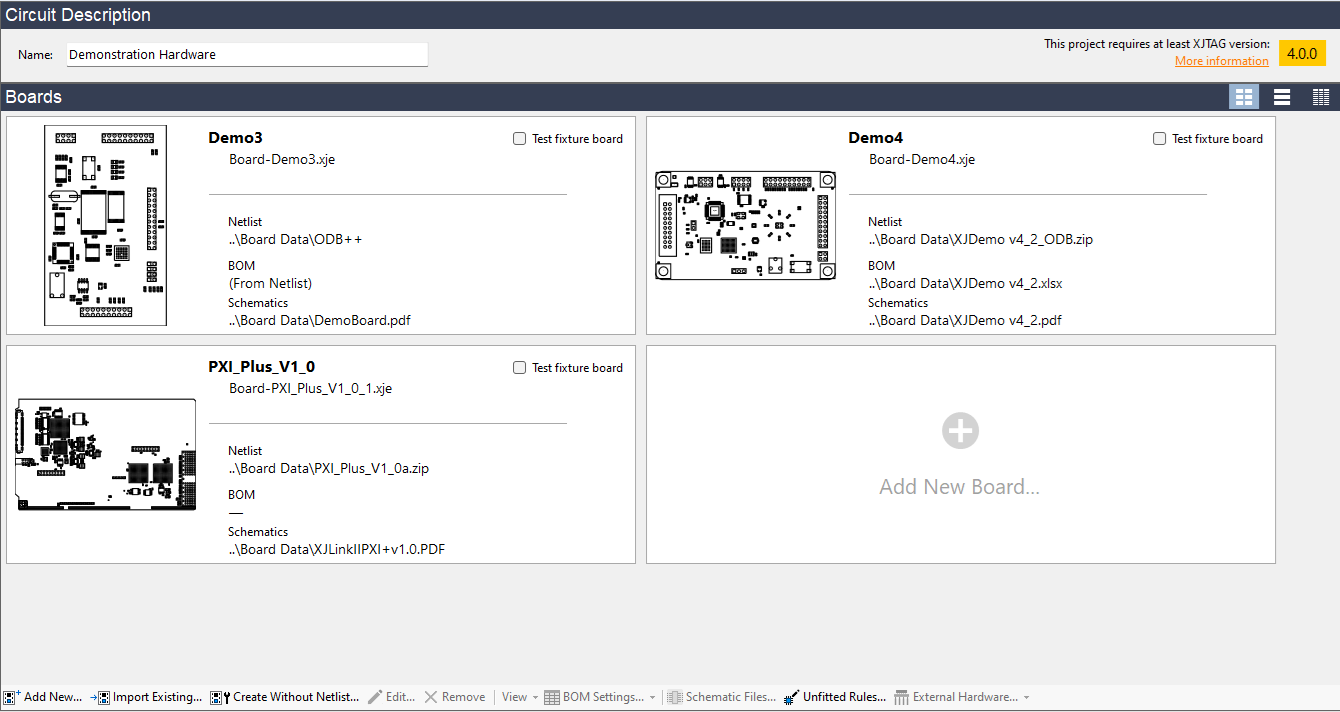A new version of XJTAG – version 4.0 – has been released, containing major updates and new features. It is now available from our website for users who are in maintenance.
Main Features
This article summarises the main features in XJTAG 4.0. Blog articles with more details on these features, and some of the many other enhancements, will follow over the coming weeks.
Optimisations to JTAG scanning
Major under-the-hood improvements to the way XJTAG handles circuits with multiple JTAG chains mean that XJTAG 4.0 is able to run each JTAG TAP at a separate frequency. Data is sent in parallel to all chains at independent TCK speeds, and the chains are synchronised at the points where signals are driven to or read from the UUT.
New projects will use this by default; existing projects will continue to work as they always have until you choose to enable the new functionality. Automatic configuration of the new feature will mean there is nothing or little to do in most cases. Other changes to optimise scan behaviour may result in significant performance improvements, depending on the configuration of your UUT hardware.
Major updates to User Interface
All of the XJTAG applications have a new and more modern look. Many places in the user interface where it has been observed that users struggle have been updated to make them more obvious and intuitive to use, and incremental improvements have been made throughout the products. In particular the Boards screen displays its data more obviously, and the Test Reset Sequence editor now responds much more fluently to the way users tend to use it, but most screens have seen at least some usability improvements or small feature enhancements.
Better support for side-by-side testing in XJRunner
XJRunner has long supported testing multiple UUTs simultaneously, but now you can arrange the output more flexibly, meaning you can have test output from different UUTs displayed side-by-side (or one above the other) as tests run.
Better multi-chain support in XJAnalyser
XJAnalyser now displays multiple chains more accurately and can show multiple independent JTAG chains simultaneously.
JTAG Chain Debugger can now open XJPack files
Because JTAG Chain Debugger does not understand XJEase code it cannot open certain pin mapping files if they call XJEase functions. This made it hard to debug certain complex projects. In XJTAG 4.0 therefore, you can open XJPack files (XJRunner projects) using the JTAG Chain Debugger (XJRunner licence required) and run test reset sequences containing calls to XJEase in that situation. This makes it easier to debug issues found during deployment, where you need to identify what is different between the situation on the production line and the test development engineer’s setup, without requiring an XJDeveloper or XJInvestigator licence to do so.



Leave A Comment